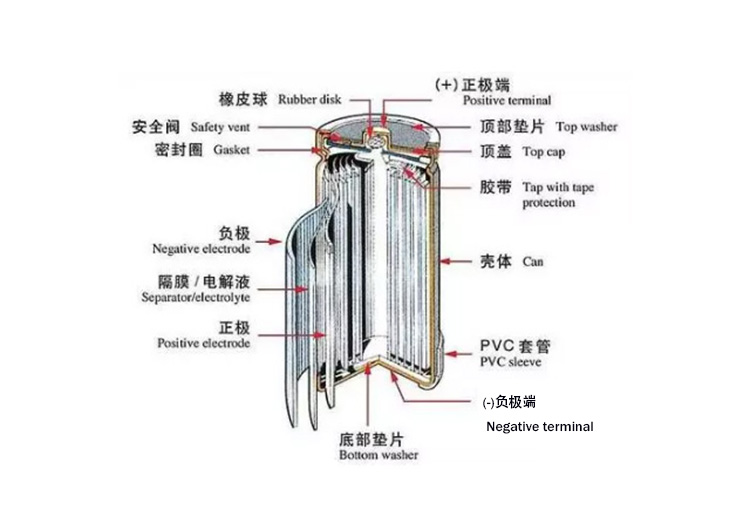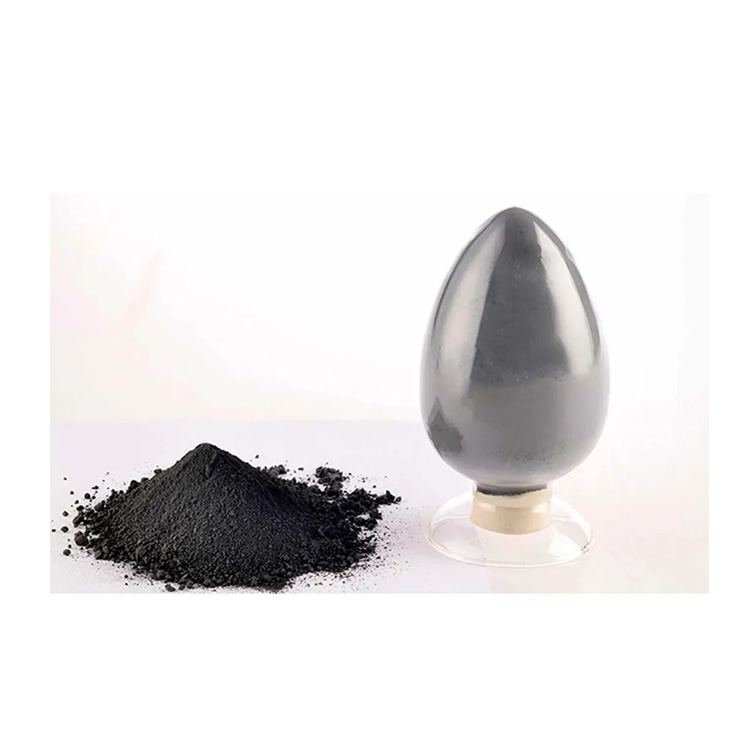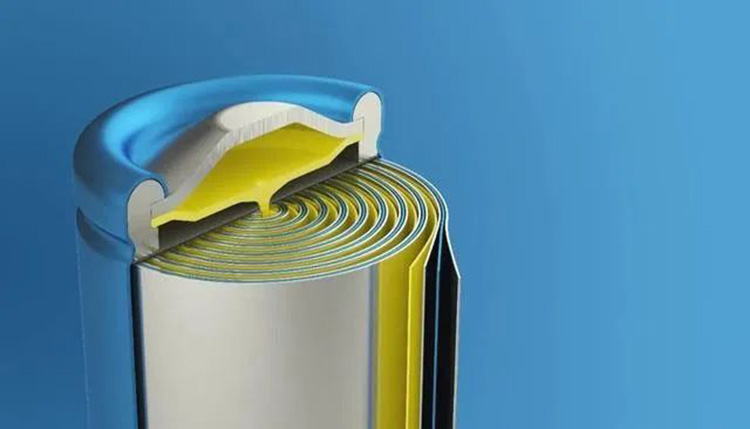The application of new materials in the lithium industry is faced with unprecedented opportunities, which also attracts a large number of start-up companies flocked to enter. The outbreak of new energy vehicles has directly raised the ceiling of the lithium material industry. We know that lithium battery is a trillion-level track, and the cost structure of lithium battery directly determines that the main material of lithium electricity has a market of hundreds of billions of levels, and the auxiliary material of lithium electricity has a market of tens of billions of levels. Secondly, under the goal of "the ultimate pursuit of battery performance", the cell factory actively seeks for leading lithium electric material factories, which provides excellent opportunities for downstream testing, customer certification and technology iteration for lithium electric material manufacturers. Leading enterprises can seize the window to take the lead in growth. Finally, the lithium material industry has high technical barriers and customer certification barriers, once successful mass production and supply, will ensure the stable purchase demand and supply share distribution of battery factory customers in a long time.
From the perspective of the product composition of lithium battery, its four key materials include positive electrode material, negative electrode material, electrolyte and separator, and all face a certain degree of development restrictions. Among them, the price of lithium carbonate, the core material of the positive electrode, is soaring and lithium resources are short; The specific capacity of the anode material graphite approximates the theoretical limit. The production capacity of important additives in electrolyte is insufficient, and the price of organic solvent is rising. separator supply tight, high technical barriers, import dependence. In view of the different problems of different materials, relevant domestic enterprises are gradually strengthening domestic substitution and increasing effective supply through technological innovation, capacity expansion, recycling and other means, so as to relieve the pressure of lithium battery raw material supply chain, so as to contribute to the further development of the terminal application market.

01
At present, the mainstream cathode materials of lithium batteries are lithium iron phosphate and terpolymer materials. In recent years, the permeability of lithium iron phosphate batteries in automobiles is on the rise, which is a partial compromise to the energy density under the premise of soaring cell costs and safety demands. The energy density of lithium iron phosphate is lower than that of ternary materials, but because of its stable olivine strong structure, it has good cycling and safety properties, and is cheaper at the same time.
According to the data of China Association of Automobile Manufacturers, taking the output of power batteries in 2021 as an example, the annual output of ternary batteries is 93.9GWh, accounting for 42.7% of the total output, and the annual output of lithium iron phosphate batteries is 125.4GWh, accounting for 57.1% of the total output. By September 2022, China's output of power batteries totaled 59.1GWh, of which ternary batteries accounted for 41.1 percent and lithium iron phosphate 58.8 percent.
If there is a positive electrode material with a higher energy density than lithium iron phosphate and a guaranteed safety and cost, it must be very sought after by cell manufacturers. Lithium manganese iron phosphate is a new potential solution.

Lithium ferromanganese phosphate(LiPF6)
Lithium ferganophosphate is currently the next generation cathode material which is highly expected by the industry, because its voltage platform can directly increase the energy density. At the same time, its structural stability is comparable to lithium iron phosphate, cost-effective is also higher. Specifically, the energy density of lithium ferromanganese phosphate is increased by 15%-20% (the limit is 25%) compared with lithium ferrophosphate, which is mainly achieved by raising the voltage platform of the cell. However, in the whole process of material replacement, the cost only increases by 5-10%, and the cost performance based on Wh is still better than that of lithium iron phosphate.
Lithium ferromanganese phosphate has a typical double voltage platform, which makes it difficult to apply. Because lithium ferromanganese phosphate material alone is used as a positive electrode, there will be a voltage plunge problem. At present, the mainstream solution is mixing three yuan. Because the voltage platform of lithium ferromanganese phosphate is close to that of ternary materials, it is usually used to mix with ternary materials to replace part of low nickel ternary materials, which can improve the cycle life and cost performance of materials. If the successful industrial application of lithium ferromanganese phosphate, it is expected that the share of lithium iron phosphate will be squeezed in the future, because "three yuan + lithium ferromanganese phosphate" compared with lithium iron phosphate can achieve efficiency and cost reduction.
In terms of the industrialization of lithium ferromangmanganese phosphate, the leading anode material factory is currently in the stage of pilot test to mass production, and the industry is expected to reach the stage of mass production in 2023. The listed companies Rongbai Technology, Dangsheng Technology and Derfang Nano have invested a lot of resources in the research and development of lithium ferromangmanganese phosphate materials. However, lithium ferromanganese phosphate is not so perfect, it has low electronic conductivity, lithium ion diffusion speed and other problems, the potential solution is to use surface coating, nano way to improve.
Rich in lithium manganese
The gram capacity of positive electrode material is the bottleneck of energy density enhancement of cell, and the high nickel ternary is the ceiling of gram capacity of current positive electrode material. The lithium ferromanganese phosphate mentioned above is more cost-effective replacement of lithium iron phosphate and low nickel ternary materials.
Li-mangan-based, another promising cathode material, can significantly improve the energy density of Li-ion batteries, breaking through the energy density ceiling of high-nickel terpolymer materials, thanks to its high gram capacity and high voltage platform. In recent years, research teams from many research institutes at home and abroad have successively announced that the gram capacity of Li-Manganese-rich base has exceeded 400mAh/g, which is significantly improved compared with the theoretical gram capacity of terpolymer 280mAh/g. On the other hand, a stable charging and discharging platform rich in lithium manganese is about 4.5-4.6V, which can increase the energy density extra.
In terms of cost, ternary materials are criticized for the high cost of cathode materials caused by the application of nickel, cobalt and other precious metals. In this respect, lithium - manganese - rich materials also have more attractive prospects than ternary materials. The cost of lithium manganese based cathode materials is mainly the cost of raw materials. Lithium enrichment can reduce the amount of cobalt element and even realize cobalt-free cathode materials, effectively reducing the cost.
However, the industrialization progress of Li-Manganese-rich base is slow, and it is generally in the stage of small laboratory trials to pilot trials, because its voltage platform is too high, and the material itself still has defects to overcome. At present, the voltage platform of lithium battery is generally below 4V. If the voltage platform is increased, the contact interface pressure between positive electrode material and electrolyte will be increased, which will lead to a series of electrolyte side reactions and affect the cycle performance of the battery. For the lithium manganese based materials, the main problems are low primary efficiency and unstable material structure, which directly affect the cyclic performance of the cell.
Therefore, the commercial application of lithium manganese rich base still needs to be overcome by scientific research and industry.
China is the world's major concentration of positive material production capacity, accounting for about 60%. The production capacity of cathode material in China is huge and the trend of head centralization gradually appears. Among them, lithium cobaltate has the highest concentration, followed by lithium iron phosphate, while ternary materials are relatively low. In 2020, the share of CR3 of three types of positive materials will be 68%, 50% and 35% respectively.
According to data statistics, 17 positive electrode material manufacturers achieved supply in the first quarter of 2020, 7 fewer than in 2019, indicating that the industry reshuffle has begun, small enterprises with poor production capacity, technology and customer structure began to withdraw from the market, and the concentration is expected to accelerate. There are 11 representative battery materials enterprises, among which four are positive electrode materials (Dangsheng Technology, Rongbai Technology, Shanshan Stock, Delfang Nano). At present, the production capacity layout of global positive electrode enterprises is no longer limited to the domestic market, but a global layout. Most of them have a long-term plan, such as high nickel, high voltage, solid state battery materials and other technologies.

Cathode material accounts for 20%-30% of the production cost of lithium battery, which is an important factor determining the performance of lithium battery. Its main technical routes include lithium cobaltate, lithium manganate, lithium iron phosphate, ternary materials, etc. With the change of technology, high nickel terpolymer with energy density advantages and lithium ferromanganese phosphate with safety and economic advantages are the main development directions.
From the perspective of resource endowment, our lithium resources are relatively short. The explosive growth of the new energy vehicle market makes the industry face the predicament of insufficient supply and demand of lithium resources. According to data released by Shanghai Steel Association, the average price of battery-grade lithium carbonate, the core raw material for the positive electrode of lithium batteries, reached 510,000 yuan per ton in September 2022, up nearly 10 times from 50,000 yuan per ton in early 2021.
In order to alleviate the shortage of lithium resources and the skyrocketing of core materials, domestic companies are extracting and recycling core materials such as nickel, cobalt and lithium from power batteries through technologies such as disassembly and recycling.
At present, China has developed the technology and equipment unit of decommissioned power lithium-ion battery pyrolysis enhanced electrode material dissociation, which can achieve the removal rate of organic matter up to 98%, and increase the positive and negative electrode material dissociation degree to 98.23% and 98.89% respectively. The surface modification flotation process and equipment unit of cobalt-rich crushed products of decommissioned power lithium-ion batteries developed can achieve positive active material recovery of over 98%.
Contact: Jason Wang
Phone: 13580725992
E-mail: sales@aooser.com
Whatsapp:13580725992
Add: No.429 Guangming Road, Shenzhen City, Guangdong Province
We chat
